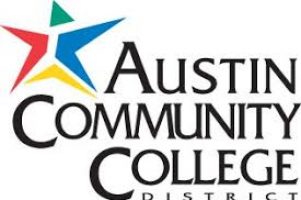Austin Community College: Helping Students Plan For Paying For College

Austin Community College enrolls over 43,000 students across 11 campuses. Most students (77%) attend part-time, and 5,500 students are classified as “First-Time-in-College.” Austin Community College’s Student Money Management Office supports students through financial literacy initiatives that help them save money and plan for paying for college. Austin Community College uses Signal Vine to help students plan for paying for college.
Implementation
The Student Money Management launched a texting pilot with Signal Vine in December 2016. The goal is to help students better budget their money throughout the semester. Staff use Signal Vine’s text messaging platform to send targeted text messages to First-Time-in-College students, though other students are welcome to sign up for the program. First-Time-in-College students are asked for their contact information at new student information sessions, where they are also asked to opt into the texting program. The program consists of reminders about important financial aid deadlines, information about upcoming workshops, and tips for managing personal finances.
The Office’s Director, Karen Serna, is responsible for creating the message schedule for the semester. Staff feedback is an important driver of the content for the program’s weekly text message. Content for the messages is developed by asking staff what they wish students knew and what questions they hear from students over and over again. Though the initial calendar of text messages was developed at the beginning of the semester, it is revised throughout the semester to reflect the team’s learnings about texting. In addition to writing text messages, Serna is also the primary responder to incoming text messages from students. Four other staff members are on call to respond to texts when there’s a high volume of messages or a need for more specialized support.
Learnings
Karen Serna, the Director of the Student Money Management Office, dedicated herself to establishing and developing the program. “It’s a really, really powerful tool, but you have to take the time to get it right. Make sure for the first semester you have enough staff time allocated to planning and executing. Once the texting program is established, you get more efficient as you go.” At the beginning of the semester, each text message crammed in a ton of information. Now, texts are designed to be simple and jargon-free. It took some time for the Office to find its texting voice. At first, texts sounded robotic.
Students noticed and responded with questions like, “Why is the sky blue?” for proof that the texts weren’t coming from a robot. Despite early bumps in establishing a texting strategy, students responded positively. The highest engagement rates were for messages about scholarships. Staff also noticed that more students applied for scholarships after asking questions via text message about specifics like essay length, GPA requirements, and whether or not they should apply.
Results
Long term, the office is looking to measure retention rates and ultimately college completion rates among students who receive texts versus those who do not. In a recent report conducted in the summer of 2018, ACC found that first-time students who were a part of the texting intervention were 13 percentage points more likely to enroll in the fall of their sophomore year than students who were not a part of the texting intervention.
They also further examined the impact of the intervention on their cohort of part-time students. Part-time students historically have lower persistence rates at ACC – with a 46% persistence rate compared to a 56% persistence rate of full-time students. In the study, they found that part-time students who received texts from ACC were not only 15 percentage points more likely to persist than other part-time students who did not receive texts, but these students even persisted at higher rates than full-time students who did not receive texts.
With strong positive results so far, ACC will continue to measure the retention rates of their current students, as well as the impact of the texting intervention on college completion when their cohort of 2016 first-year students reaches the time for graduation.
Messages with High Response Rates
“Have you paid your tuition and fees for the spring?”
“[First Name], do you plan to transfer to a 4-year school after ACC?”
“[First Name], is filling out your 2017/2018 FAFSA on your to-do list, or your completed list? Text C for completed and N for not completed.”
“[First Name], you were one of the few in class w/ a budget! Have you included all your periodic expenses? Top thing that throws a budget off.”
Signal Vine is really easy to use. It looks like my email inbox. Customer Success gets back to me within minutes so I have support when I need it. That makes me feel confident and comfortable.
Similar Customers
Communicating effectively with your campus communities is of paramount importance right now
If you’d like to learn how Signal Vine can help, please join us for a demo.

